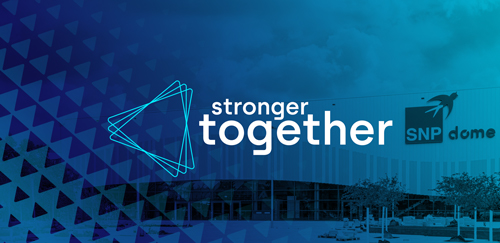Top three data transformation challenges in mergers and acquisitions and how to tackle them
In this guide, we’ll dive into the top three data challenges in M&As and show you how SNP can help your business merge with confidence and ease.
Share
Mergers and acquisitions bring exciting opportunities – but they also come with some serious data challenges.
From syncing different systems to protecting valuable legacy data, these hurdles can feel daunting. The good news? With a few smart strategies and the right tools, you can make the transition easier on your team.
Three key challenges in transforming data during M&As
Mergers and acquisitions can open new doors for growth – but they also bring some of the toughest data challenges your team may ever face.
Here are the top three challenges that often come up in M&As and how to approach them:
Challenge #1: Mismatched systems
Different SAP systems can be difficult to align, with inconsistencies in formats, structures, and taxonomies. Getting everything in sync is key to a smooth integration.
Challenge #2: Keeping downtime low
Long downtimes during data transformation can bring operations to a standstill. Minimizing downtime is essential to keeping your team and customers connected.
Challenge #3: Managing data volume
The volume of data directly impacts costs, processing times, and system performance, especially in complex integrations like ERP consolidations. Reducing data volume by filtering or archiving historical data can improve processing speed, ensuring faster completion and reducing downtime during transitions.
With the right tools and strategies, each of these challenges becomes manageable.
Next, we’ll look at solutions that make the transformation process easier for your team.
Practical solutions to overcome data transformation challenges
Now that you’ve learned about the challenges, here’s how SNP’s tools make it simpler to sync systems, cut downtime, and keep essential data within reach – backed up by real-world successes.
Solution 1: Aligning different systems for consistency
Challenge overview:
Merging SAP systems can reveal deep-rooted inconsistencies in data formats and structures, creating hurdles in system alignment. Such misalignments create hurdles when attempting to consolidate data into a unified system. They can lead to errors in reporting, hinder real-time data access, and complicate operational processes. Without resolving these issues, organizations risk delays, data integrity issues, and higher costs, all of which undermine the success of their transformation projects.
SNP’s approach:
SNP’s solution CrystalBridge® tackles data inconsistencies head-on, standardizing formats and harmonizing structures to align disparate systems. This robust tool not only simplifies the transformation journey but also accelerates it, reducing manual effort and the risk of errors. With built-in capabilities for data validation, organizations can confidently migrate data, ensuring its integrity and compliance throughout the process.
Here’s how Diehl Aircabin used this approach to overcome their system alignment challenges with SNP’s support:
Real-world success: Diehl Aircabin
Diehl Aircabin needed a swift data harmonization process to integrate its SAP and non-SAP systems while keeping operations uninterrupted. SNP’s CrystalBridge enabled continuous testing and migration with downtime limited to under 48 hours, allowing Diehl to achieve a smooth, controlled transition without impacting business continuity.
Solution 2: Minimizing downtime to keep operations running
Challenge overview:
Downtime during data migration can disrupt business operations and damage customer relations. Both “big bang” and wave-based migrations can address this but must be tailored to a company’s specific environment.
SNP’s approach:
SNP employs advanced methodologies to ensure business continuity during SAP migrations, notably through near-zero downtime (NZD) and minimized downtime on target (MDT).
Near-zero downtime:
NZD minimizes system downtime by allowing business operations to continue during the main migration phase. This happens through a phased data transfer process:
- Initial migration: An initial data transfer is performed while the system remains operational.
- Delta migrations: Subsequent delta migrations capture and transfer any changes made during the initial migration phase.
- Final cutover: A brief downtime window is used to apply any final data changes to ensure the system is fully updated with minimal disruption.
Minimized downtime on target:
MDT focuses on reducing downtime for target systems during wave-based migrations. These are conducted in phases to manage complexity. Key components of the MDT approach include:
- Staging environment: Data is initially migrated to a staging client before integration into the production system. This prevents migration process disruptions.
- Duplicate detection: MDT identifies and manages duplicate records to ensure existing operational data remains unaffected.
- Number range coupling: This process manages data renumbering by coupling number ranges between staging and production systems to maintain data consistency.
- Final data move: After thorough validation, data is moved from the staging client to the production system with minimal downtime, ensuring business continuity.
Murphy Oil’s experience showcases how this approach can protect critical timelines:
Real-world success: Murphy Oil
Murphy Oil needed an efficient, minimal-downtime solution during an SAP carve-out. SNP’s disciplined MDT approach achieved less than 24 hours of downtime, meeting the buyer’s timeline while maintaining system stability – a crucial factor in Murphy Oil’s successful carve-out.
Solution 3: Efficiently archiving and managing data volume
Challenge overview:
Merging two ERP systems in an M&A can result in large volumes of data, which can slow down system performance and increase storage costs. The system struggles to process, store, and retrieve vast amounts of historical or less relevant data. This can impact the speed of transactions, reporting, and decision-making, reducing overall system efficiency. Additionally, as data accumulates, so do storage costs, which can quickly become unsustainable for businesses managing vast amounts of transaction, operational, and historical data. Managing such a large dataset is crucial to ensure efficiency and maintain data accessibility.
SNP’s approach:
Outboard ERP Archiving securely offloads historical and less frequently used data to an external archive. This approach keeps the main ERP system lean, enabling faster processing and streamlined operations while preserving access to archived information when needed.
Real-world success: United Farmers of Alberta
The United Farmers of Alberta (UFA) faced the challenge of migrating their SAP system to the cloud while managing extensive historical data. To address this, they implemented SNP’s Outboard solution to achieve legacy data efficiently.
This strategy allowed UFA to retain essential records for compliance and reporting without overburdening their new cloud-based system.
By archiving less frequently accessed data, UFA streamlined their migration process, optimized system performance, and ensured a seamless transition to the cloud environment.
Now that you’ve explored the core challenges and solutions for data transformation, let’s revisit some of the most important questions decision-makers like you face during M&As.
FAQs on data transformation in mergers and acquisitions
Data harmonization standardizes formats and structures across different systems, which is essential for merging companies. Without it, data inconsistencies can disrupt operations and lead to integration issues.
Near-zero downtime keeps systems active during data migration, minimizing disruptions and allowing business operations to continue smoothly. This approach is especially valuable in M&As, where timing and operational continuity are crucial.
To manage and optimize large data volumes, focus on data archiving. Use specialized software like SNP Outboard ERP Archiving which stores infrequently accessed data outside the primary SAP system, reducing database size and improving system performance. It ensures historical data remains accessible for reporting or compliance while lowering storage costs and simplifying system migrations.
Data validation ensures the accuracy and quality of information being transferred, reducing errors and preventing costly delays. With tools like SNP Validate, companies can maintain data integrity during complex migrations.
Success in M&A data transformation can be measured by minimal disruptions to business operations, accuracy and completeness of migrated data, and robust system performance. Monitoring these outcomes helps validate the effectiveness of the transformation process.
By addressing common challenges with targeted solutions, you’re not only ensuring a smooth integration but also setting your business up for long-term success.
Transform with confidence: M&A integration success is within reach
As you’ve learned, data transformation isn’t a barrier to your merger or acquisition. With the right tools and solutions, those challenges can be tackled with precision and ease.
The right approach will help your teams integrate seamlessly, maintain compliance, and keep operations running smoothly.
Ready to take the next steps to build your transformation journey? Contact SNP today to maximize success.





